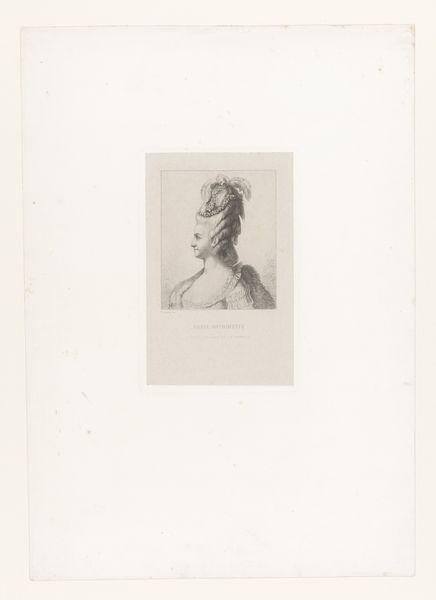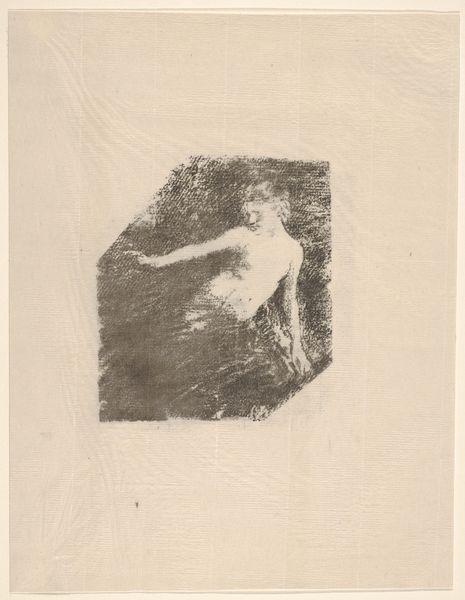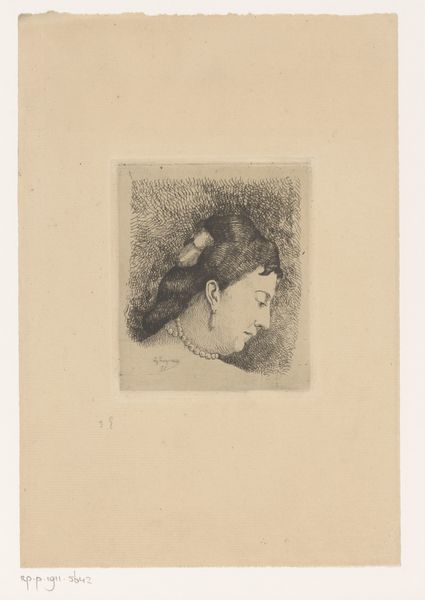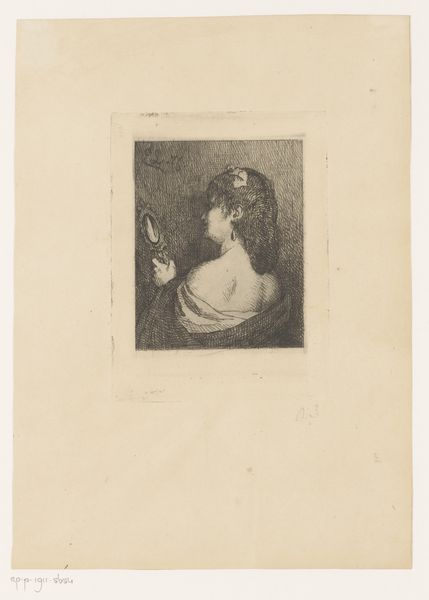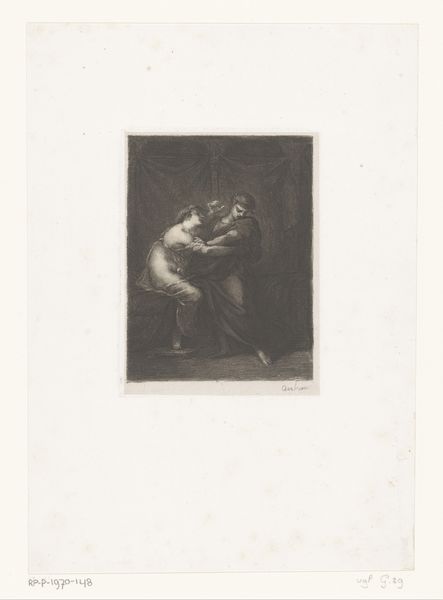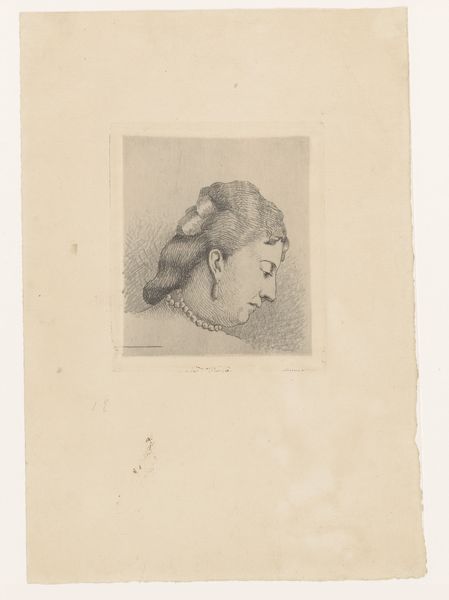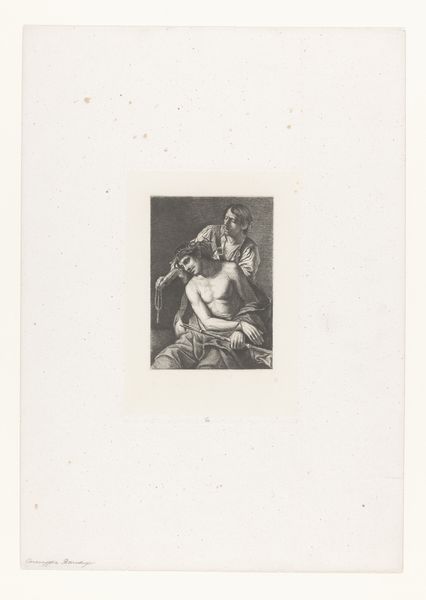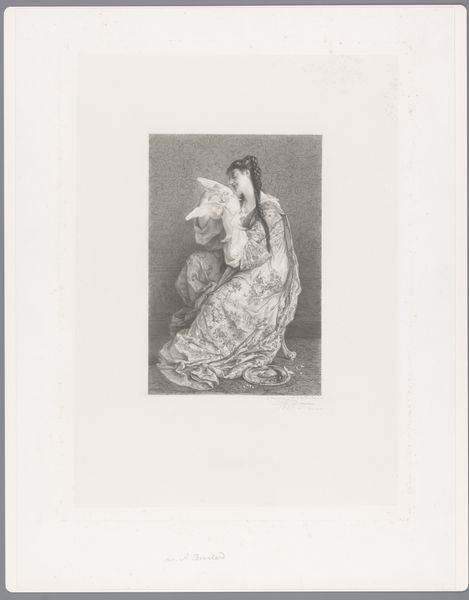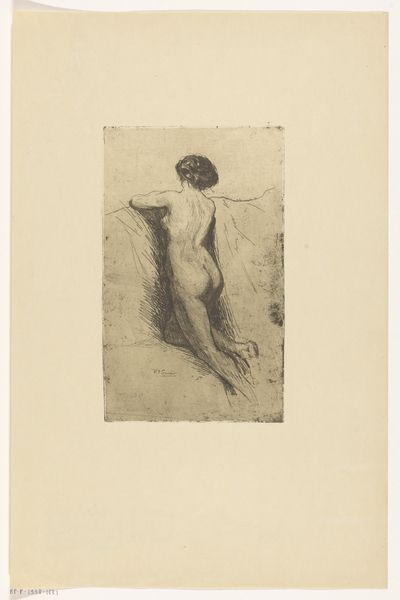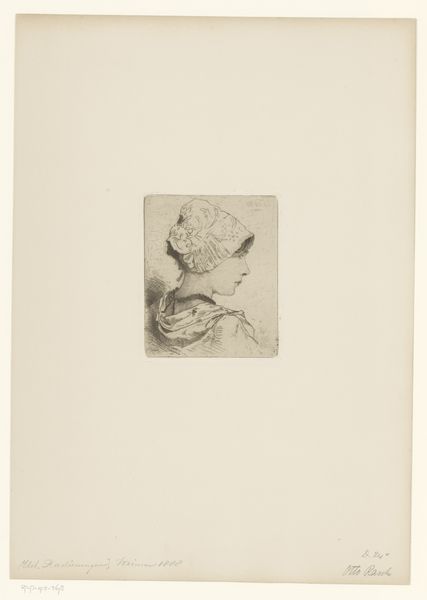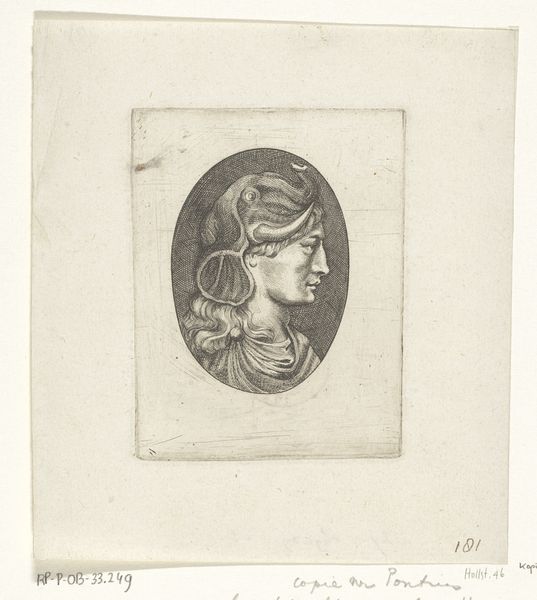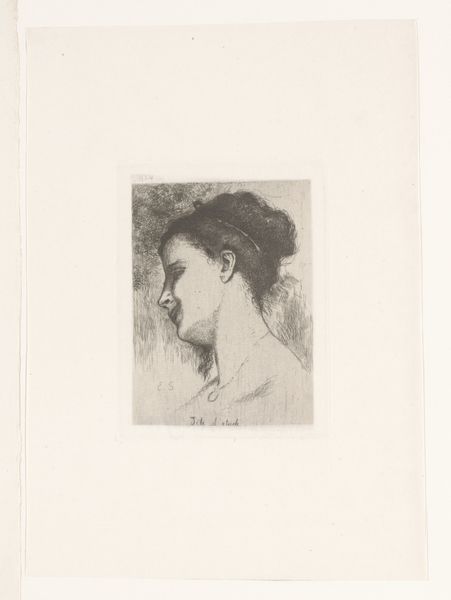
print, paper, pencil, wood-engraving, engraving
#
portrait
#
pencil drawn
#
aged paper
# print
#
paper
#
pencil
#
line
#
wood-engraving
#
engraving
Dimensions: 4 5/16 x 4 1/16 in. (10.95 x 10.32 cm) (image)12 x 9 5/8 in. (30.48 x 24.45 cm) (sheet)
Copyright: Public Domain
Editor: Here we have William B. Closson’s "Portrait of a Woman," created around the 19th century. It's a print, combining wood-engraving and engraving on paper. The aged paper gives it a ghostly feel, like a memory fading. What do you see when you look at this piece? Curator: Well, let's consider the materiality first. The use of wood engraving, a technique that boomed with the rise of mass media, is key. How does the choice of this reproductive medium affect our understanding of the subject? Editor: So, because it's a print, it connects to mass production. Does that challenge the idea of this woman being a unique, upper-class individual worthy of portraiture? Curator: Precisely. This could be about democratizing access to imagery. Engravings made portraits more widely available, even though originally portraiture was an elite pursuit. Also, let’s think about the labor involved. An artisan carefully carving wood, creating multiples. What social class is being represented in labor compared to who is being portrayed? Editor: That's a fascinating tension. The detailed labor to produce an image that’s more accessible. The skill embedded in this technique. It makes you wonder about the artisan’s relationship to their work and its consumer. Curator: Indeed! It encourages us to look beyond just the image and think about the whole circuit of production, consumption, and the social structures inherent in that circuit. Editor: I never thought about prints that way. I was focusing on her, as an individual. This helps see prints as part of a whole economic system. Thank you. Curator: Of course. Considering the work behind the work opens a wider perspective to analyzing material, skill, and social structures.
Comments
No comments
Be the first to comment and join the conversation on the ultimate creative platform.

